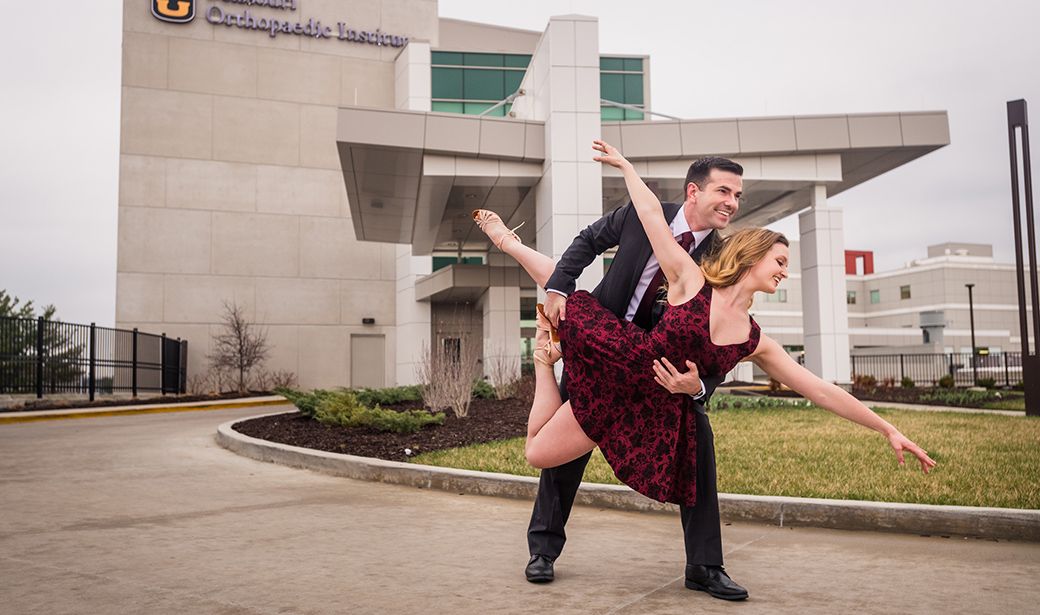Orthopaedic surgeon sports medicine specialist Nathan Skelley, MD, knows a thing or two about starting a new training regimen. He is paired with a local professional Missouri Contemporary Ballet dancer, Nikki Bell, for this year’s Dancing with Missouri Stars event and has been training vigorously for the May 16 fundraiser.
Skelley is well-versed in a number of competitive sports. His first job was teaching martial arts, and he is no stranger to the hard work required for mastering a sport. Despite being a complete beginner, he was confident that he could learn ballroom dance with ease.
“I thought I knew what I was getting into, but dancing with Nikki Bell is at a whole different level,” Skelley said. “The whole process has been significantly more intense than I anticipated.”
When training for any intense new activity, safety should be your No. 1 priority. Skelley shared some tips that helped him prepare to show his moves on a big stage.
Before You Start
Always plan and prepare before you start physically demanding activities.
“Visit with your primary care physician and talk to them about your plan,” Skelley said. “Make sure that you are physically fit and capable of doing the activity.”
And make sure you have the proper gear.
“I was surprised by the shoes I am supposed to wear for dancing. The heels are actually lifted by an inch and a half, which is something I wasn’t used to,” Skelley said. “When using new gear, get proper instruction on how to use it so you can avoid sprains or other injuries.”
The best way to ensure safety is to train under the guidance of an expert who knows how to tailor a program to your skill level. Skelley and Bell are working on a Lindy hop and a waltz for their performance, and those dances required detailed, step-by-step instructions.
“Nikki has great experience with working with a wide range of dancers, from adults to very young children, so it helps when working with a surgeon,” Skelley said. “She’s very good at taking my inadequacies and my learning curve when we try new moves and dances.”
While Training
You might be excited about a new activity and want to jump right in at a fast pace, but it’s better to take it slowly.
“You don’t want to overdo it and cause an overuse injury,” Skelley said. “It’s not safe to try to perform at a high level when you are fatigued.”
Add a warm-up and stretching routine to your activity to keep your muscles warm and ready to move. And don’t forget a very important facial stretch: your smile.
“The most important tip is to have fun with it,” Skelley said. “I love what I do as a profession, but it’s also very high pressure. The greatest break I have in my entire week is when I get to dance with Nikki and learn something new.”



